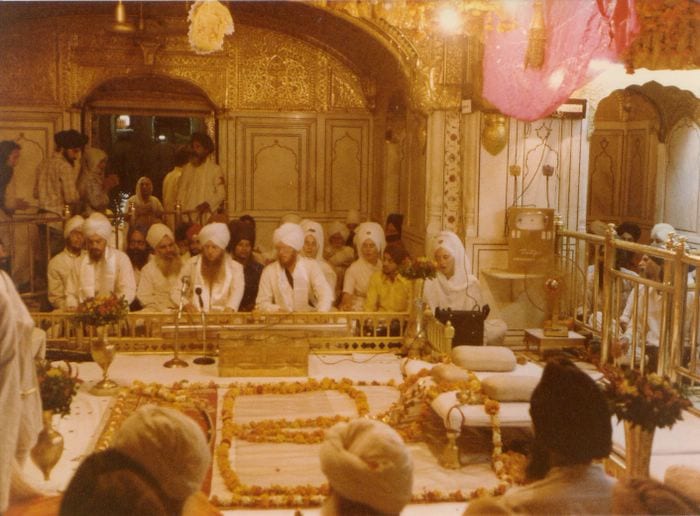Theme for the Week:
The focus in the following verses is on getting our body aligned with and fully in sync with the Gurus’ thoughts. The aim of the Gurbani is to guide us in being truthful in our daily thoughts, words and actions. This can be done through the observations of our Gurus’ personality, life, vision and insights during their lifetimes.
We can learn about the Gurus not only by looking at their historical accounts, but also by reading and understanding their writings. The Guru Granth Sahib is our passport to the luxury of going back to the Gurus’ times and experiencing how it was like to be close to our Gurus as they shared their spiritual wisdom with congregations. The message of the Gurbani is the inclusiveness of humanity as one family.
However despite the Gurus living hundreds of years back, the Gurbani is not time bound. Neither is it a set of rules and laws to be followed. It is the divine utterances of wise, knowledgeable, noble and spiritually enlightened personalities who speak to humanity about a truthful life. In this set, we are paying special reference to Guru Amar Das.
One of the Bhatt-poets (or bards), Bhatt Jaalap, who lived in the times of the Gurus is the author of these verses. The Bhatts enjoyed and embraced the Gurus’ presence at close hand. Since they were also sincere devotees who communicated with the Gurus, we can experience the Guru’s presence close by, as it is slowly unfolds in front of our eyes through these hymns written about the Gurus. We get to see and experience how they felt when they described first-hand accounts of the charismatic and inspirational personalities of our Gurus.
ਹਥ (hath)
Meaning: noun: hands.
Quote:
ਹਥ ਤ ਪਰ ਸਕਯਥ ਹਥ ਲਗਹਿ ਗੁਰ ਅਮਰ ਪਯ॥
hath ta par sakyath hath lagahi gur amar pay.
The hands are blessed only if the hands touch the feet of Guru Amar Das. – Bhatt Jaalap, Guru Granth Sahib, Page 1394
Message: In this verse, the focus is on the hands of the devotees (past and present devotees) touching the Guru’s feet. In Indian culture, touching the feet of a person who is normally an elder, senior or more learned is a sign of respect and positive submission. The devotee submits himself or herself to following what the Guru teaches. This can only be done if we tame our egoism and accept what the Guru says with humility.
“The hands touching the Guru’s feet” need not be merely a physical action (though it shows respect) but an act of submitting to the Guru’s teachings that would lead us to our spiritual enlightenment. Through the Guru’s guidance, we can overcome our evil tendencies and actually turn them into positive habits and actions. In this way the desire and passion to learn help us to avoid harming ourselves and others while we live in this world because the Guru can show us the safe path. Thus a seeker needs to reach out to the Guru’s wisdom in all humility.
Keen to Explore Further?
Etymology: From Sanskrit hast (hand) → Pali hatth (hand, forearm) → Prakrit hatth → Sindhi hathu (hand) → Lahndi/Punjabi hath; Hindi, Marwari, Gujarati haath.




